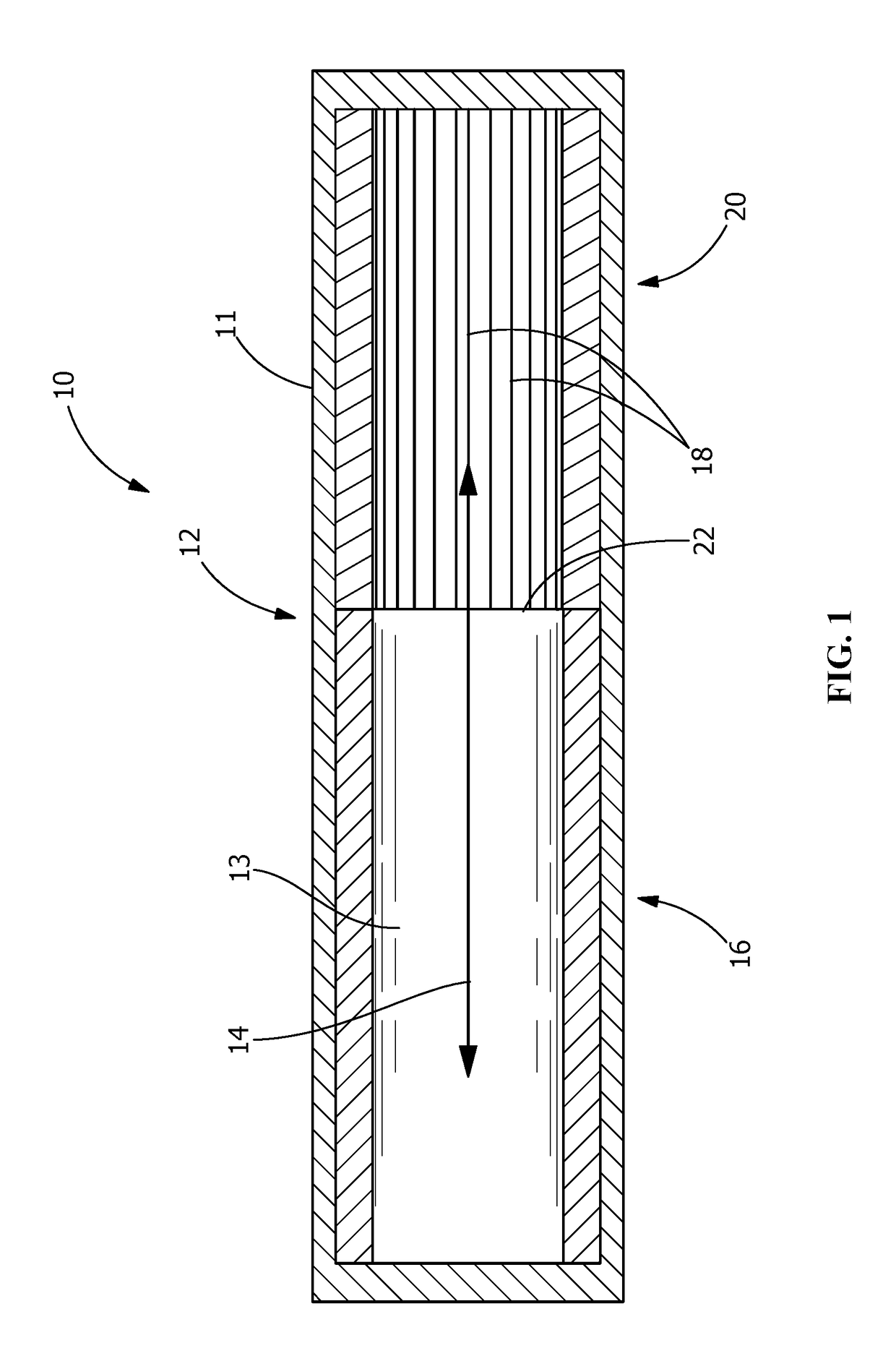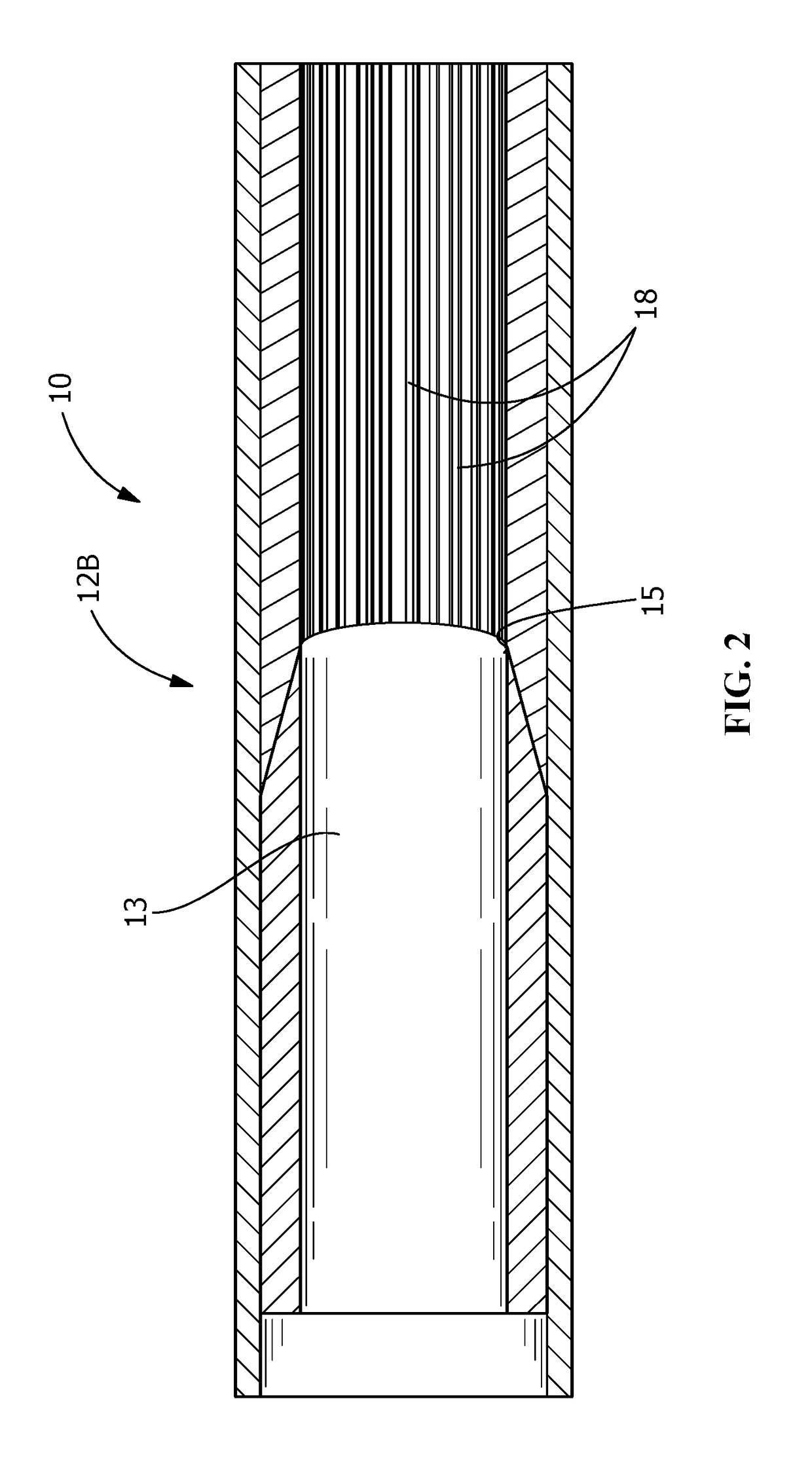Hybrid heat pipe
a heat pipe and hybrid technology, applied in the field of hybrid heat pipes, can solve the problems of difficult to form high-performance wicks in aluminum heat pipes, insufficient heat flux to remove oxide, and inability to form sintered aluminum powder wicks, etc., and achieve high heat flux, high performance, and high performance.
- Summary
- Abstract
- Description
- Claims
- Application Information
AI Technical Summary
Benefits of technology
Problems solved by technology
Method used
Image
Examples
Embodiment Construction
[0023]FIG. 1 is a cross section view of hybrid heat pipe 10 which is a pipe with closed ends. The pipe, which forms the casing of the heat pipe, is made of a heat conductive material which can be metal or some other heat conductive material such as ceramic. Interface 12 is the junction between porous wick 13 in evaporator section 16, and capillary grooves 18 formed in the casing wall of condenser section 20. Parts 11 are the walls of the outermost grooves. Interface 12 is capable of transferring condensed liquid from grooves 18 to porous wick 13, and interface 12 is squared off end 22 of porous wick 13 pressed against grooves 18. Vapor space 14 is located in the central region of heat pipe 10 and is an open passage between condenser section 20 and evaporator section 16.
[0024]The critical requirements for evaporator wick 13 are good fluid connection with capillary grooves 18 and good thermal connection with the wall of evaporator section 16. Instead of forming a higher performance wi...
PUM
 Login to View More
Login to View More Abstract
Description
Claims
Application Information
 Login to View More
Login to View More - R&D
- Intellectual Property
- Life Sciences
- Materials
- Tech Scout
- Unparalleled Data Quality
- Higher Quality Content
- 60% Fewer Hallucinations
Browse by: Latest US Patents, China's latest patents, Technical Efficacy Thesaurus, Application Domain, Technology Topic, Popular Technical Reports.
© 2025 PatSnap. All rights reserved.Legal|Privacy policy|Modern Slavery Act Transparency Statement|Sitemap|About US| Contact US: help@patsnap.com



